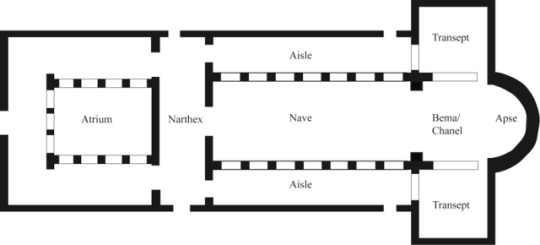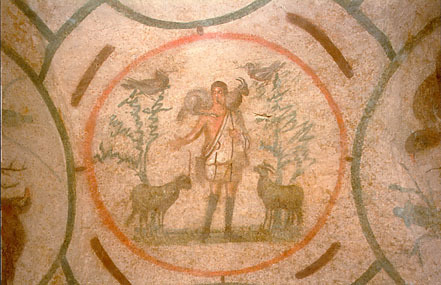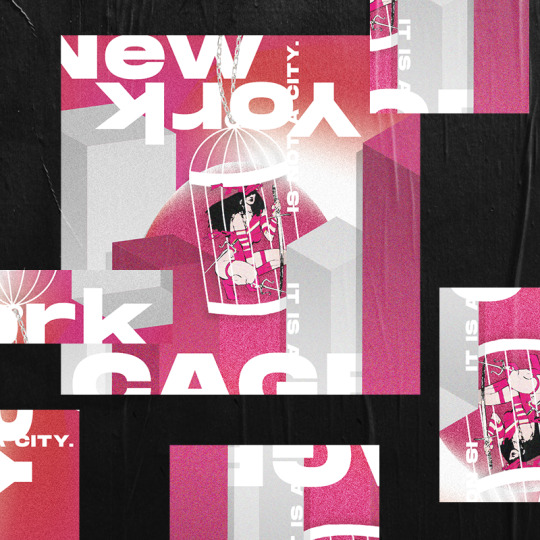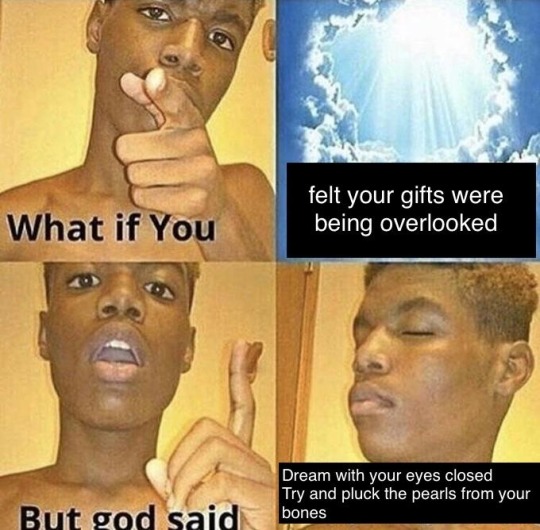#creative insights
Text
The truth behind stories, heroines journey, and the war of art: a 1-month plan to pursuing the Artists Journey
Fairy tales are more than true: not because they ” tell us that dragons exist, but because they tell usthat dragons can be beaten.
— Neil Gaiman, Coraline
In the vast landscape of storytelling, there exists a journey that has captured the imagination of humanity for centuries — the Hero’s Journey. It’s a timeless narrative structure, beautifully explored by Joseph Campbell, that takes our…

View On WordPress
#Artist’s Journey#artistic community#artistic development#artistic experimentation#artistic growth#artistic journal#constructive feedback#creative flow#creative habits#creative insights#creative medium#Creative Process#creative prompts#creative risks#creative sparks#creativity#daily habit#Exploration#goal setting#imaginative journey#inspiration#mindfulness meditation#narrative design#nurturing creativity#personal exploration#self-discovery#Self-expression#solo adventure#storytelling#storytelling prowess.
2 notes
·
View notes
Text
Unlocking Creative Solutions: Harnessing the Subconscious Mind
Discover the power of harnessing the subconscious mind, following Thomas Edison's approach, for creative problem-solving and innovative ideas.
Have you ever wondered how great minds like Thomas Edison came up with groundbreaking ideas? The key lies in harnessing the subconscious mind. This blog explores Edison’s unique approach to problem-solving and how you can apply it in your life.
The Power of the Subconscious
Edison believed in engaging his subconscious before sleep to solve problems. This method taps into the subconscious mind’s…

View On WordPress
#brainstorming techniques#cognitive strategies#creative insights#creative problem solving#creative thinking#creativity#Edison&039;s methods#Edison&039;s techniques#idea generation#innovation#innovation techniques#mental processing#mental wellness#mind power#mindfulness and creativity#personal development#problem solving#productivity hacks#self improvement#self-improvement tips#sleep and creativity#subconscious mind#subconscious solutions#Thomas Edison#thought patterns#unlocking potentia
0 notes
Text
my hot take is that if you want to write a book, you need to read books
#Twitter would crucify me#not that this site is tremendously better at times#but sometimes it is#anyway. you can engage with creative media for inspiration so much#for characters for plot for arcs for ideas#but you also— 100%— need to read actual books#whole ass published books#because if you want to write a BOOK#you need to know what the craft is#not just the story and the inspiration#but the legit writing craft of language and storytelling with the written word#and try as you might: nothing will compare to that#no film or tv series or anything else will give you the same insight on How to Write as reading a book will#audio books count too!! they are still books; just audible ones#but you just— guys you just gotta read#you can’t neglect it as an essential for your own writing#sap spill
20K notes
·
View notes
Quote
Sometimes a step back or away from an idea, task or project brings even more perspective, insight and clarity.
Rasheed Ogunlaru
#Rasheed Ogunlaru#quotes#motivation#inspiration#thepersonalquotes#literature#lit#business-quotes#creativity#getting-things-done#ideas-quotes#insight#inspirational-quotes#motivational-quotes#perspective#productivity#project-management#projects#rasheed-ogunlaru#rasheed-ogunlaru-quotes
155 notes
·
View notes
Text
“i believe in the idea that old bits of equipment have songs built into them already, like a ghost in the walls.”
#i love the way his mind works so much i don’t even know how to talk about it#this is such a fascinating insight into his creative process#also idk which of these interviews came first but i love that he speaks in such similar patterns about the same idea#it’s clearly a thought he’s really spent time with#and i also love how adamant he is that he can’t play the piano 😂😭#alex turner#arctic monkeys#alex vid#am era#lulu posts
186 notes
·
View notes
Text
see the interesting thing is that while 'Al art' continues to improve aesthetically it also continues to be made by and for people who don't actually *create* art, just *look* at it. and it's been so interesting to watch, because it's such a wild insight into what people who don't draw are seeing when they look at pictures, what they care about, what they don't notice.
some things (faces, eyes, lighting, hands) have been pretty much perfected, or at least reached a point where they don't 'look wrong' upon first glance, but i still have yet to be surprised to find out an image was Al-generated because there's such a clear lack of artistic process behind any of it. if you look at any part of the 'art' and ask yourself 'why and how would someone draw this like that' there's never an answer. there's nothing there.
#mumbling#it's like a really expensive no-creativity-required version of seeing a face in a cloud#tbh it's helped me a bit artistically to understand what people actually See it's kinda cool#the earlier nonsense versions were more helpful there bc they were just pure vibes no substance#but the more advanced ones are a still a valuable insight into what people think things look like#it doesn't usually 'look wrong' anymore but even when it did it never looked as wrong as it SHOULD which was so interesting to me#real art often looks wrong on purpose but Al art always seems to look right on accident
274 notes
·
View notes
Text
Could anyone give me some insight into celtic culture? Their beliefs, deities, rituals, symbols and the meaning etc, just anything at all

#writers on tumblr#writerscommunity#creative writing#writeblr#writing#writing community#writers and poets#celtic#religion#writing help#please help#help#insights#writers block#writers#please reblog#18+ account#18+ blog#18+ content
32 notes
·
View notes
Text
A writer’s guide to art and civil construction: worldbuilding insights – #1 Early Christian art (Part I)
In this guide, which delves into the history of art and civil construction, my aim is to explore the cultural and anthropological factors that influenced the emergence of particular art forms within their respective historical contexts. The goal is to inspire and offer practical insights for those engaged in worldbuilding, especially in crafting art and urban environments that resonate with their chosen settings. Throughout the guide, I will analyze various historical periods from a cultural and historical perspective, providing inspiration rather than prescriptive worldbuilding advice. It's worth noting that the focus will primarily be on the Mediterranean and Europe (I'm Italian ✨ so my academic studies focus on Italy and its surroundings), spanning from the end of the ancient age to the contemporary age.
The emergence of stylistic elements in early Christian art is fascinating because it inspires envisioning the characteristics of religious buildings in a situation where two coexisting religions, one significantly older, shape the cultural landscape.
Diachronic excursus
Let's briefly summarize the historical context surrounding early Christian art to better understand the culture and motivations behind the stylistic choices in urban and rural settings, as well as the care or neglect of these environments.
Two key points to focus on for understanding this historical reality through our chosen lens are:
Spread of Christianity
Germanic invasions (which we'll discuss in the next post)
The spread — not birth — of Christianity occurred gradually, beginning around the time of the Edict of Milan in 313 AD, issued by Constantine, which declared Christianity a religio licita, meaning that it granted freedom of worship. It was further established as the “state religion” with the Edict of Thessalonica by Theodosius I in 380, mandating worship.
While Constantine had political motives for issuing this edict (yes, the legend about Constantine’s vision is just that), our focus lies on the socio-cultural context in which an emperor favored a religion amidst a predominantly pagan Roman aristocracy.
Origins of early Christian art
In its early stages, before Christianity became the state religion, Constantine, who oversaw the construction of the first Christian places of worship, took into account the pagan sensitivities of the aristocracy. As a result, these early buildings exhibited the following characteristics:
Located outside the city center, where pagan temples were typically found (often situated beyond the city walls, as was the case in Rome);
Featuring a simple exterior, often constructed with common brick (laterizio) and lacking elaborate decorations;
Boasting monumental dimensions to accommodate the public liturgy of Christianity, inspired by the Last Supper, as well as reflecting Roman appreciation for grandeur.
The decision to depart from classical norms stylistically served both to avoid offending the aristocracy and to visually distinguish Christian structures symbolically from classical temples.
Types of buildings
Basilica
The basilica, which predates Christianity, emerged in Italy following the Second Punic War in the first half of the 3rd century BC. Originally serving administrative functions, it featured a rectangular layout with three naves (side corridors) and two apses (semicircular protrusions) on either side, with the entrance situated along the longer side.


The architectural design of basilicas was chosen for its spacious layout, although modifications were made to suit the needs of Christian worship. Unlike their original purpose, which varied, Christian basilicas typically adopted a longitudinal plan with three or five naves. They featured an entrance on one of the shorter sides, leading to a single apse opposite the entrance.
This adaptation involved repurposing buildings originally intended for other functions, driven primarily by practical considerations. An important detail regarding the structural elements is seen in the narthex and the quadriportico.
Narthex: a sort of rectangular entrance area.
Quadriportico: a large external four-sided portico attached to the entrance wall.
Both spaces were used to accommodate catechumens (the unbaptized) and penitents¹. Initially, the quadriportico fulfilled this role, but it was gradually replaced by the narthex between the 6th and 8th centuries.
This transition was prompted by changes in baptismal practices. As the custom of adult baptism declined, it became apparent that many individuals were already baptized, rendering the extensive space for catechumens unnecessary. Consequently, the need for a large quadriportico diminished.
The narthex, too, began to decline in importance from the 7th century onward, reflecting a decrease in the number of unbaptized individuals attending services.

Another fascinating aspect illustrating the synthesis of paganism, Roman art, and Christianity is evident in the architectural feature known as the triumphal arch. Typically semicircular, the arch serves as a division between the central nave and either the presbyterial area.
The architectural concept of the basilica’s arch finds its origins in the Roman triumphal arch, a grand structure with one or more openings (fornix) traditionally erected to commemorate military victories. In Christianity, this symbol was reimagined to signify Jesus' triumph over evil and death. Moreover, the arch served a dual purpose as both a symbolic gateway between the space reserved for worshipers and that designated for the clergy (the presbyterial zone).


Now, I won't dive into discussing every single architectural detail of basilicas or the liturgical furnishings (although, if anyone desires, they can ask, and I'll gladly provide a glossary). Instead, let's briefly look at the different floor plans a basilica can have:
Latin cross: this design is longitudinal, with a shorter horizontal section intersected by a transept, either about ¾ along its length (immissa) or closer to the apse (commissa or tau).
Greek cross: here the transept intersects at the center, with arms of equal length to the nave. This layout was more prevalent in the Eastern tradition.
Circiform: this is a distinctive basilica design used for cemeteries, as well as for hosting specific masses like funeral banquets and an annual mass in honor of the titular saint's martyrdom. It lacks a transept and features a ring corridor intended for burials.

Baptistery
The baptistery was a centrally planned building², often octagonal, specifically designed for conducting baptisms, with the baptismal font positioned at its center.
Was traditionally distinct from the main body of the church, it was commonly situated adjacent to or in front of the main facade, especially until the Gothic period, notably in Italy.
The octagonal design held symbolic significance; eight represented an eschatological number, closely linked with the Resurrection of Christ, who rose eight days after his entry into Jerusalem. Thus, the octagon came to symbolize the concept of eternal life conferred upon the faithful through baptism.
This architectural feature reflects influence from Roman traditions, drawing inspiration from thermal buildings, particularly the frigidarium, which the Romans referred to as a baptisterium (derived from the Greek, meaning “place where one receives enlightenment”). Hence, the origin of the term can be traced back to this context.


Martyrium
Another centrally planned building (circular or polygonal) prevalent in the 4th century, the martyrium (from the Greek “witness”) was erected on the site of a martyrdom or over the tomb of a martyr.
Over time, they also began to serve as repositories for the remains of martyrs, often located at the center of the building. The martyrium's origins lie in the cult of martyrs, which itself evolved from the more common pagan reverence for the dead. Its architectural design was influenced by classical mausoleums, grand tombs traditionally used to house the remains of significant individuals.

Images, iconography, and iconology
The influence of architecture extends to imagery as well; Christianity originally spread through pagan iconography and symbolism. Art served as a means of proselytism. Why? Because classical art had long been used to convey the divine, and Christianity also drew inspiration from Roman culture in this aspect.
Even the artistic techniques bore similarities to those of the pagans:
Sculpture, as evidenced by sarcophagi.
Mosaics, widely employed for adorning basilicas (which in Roman art were mainly used for floors but eventually shifted to the apse — see subsection on the hierarchy of light).
It can be argued that from this classical influence emerged the conceptual link between wealth, splendor, and divine grandeur; gold symbolized divine light (indeed, numerous mosaics featured golden backgrounds) — a motif that would resonate throughout the Middle Ages — reminiscent of the portrayal of the deified emperor in the declining centuries of the Roman Empire. Pagan iconographies were thus reinterpreted, with scenes of apotheosis transformed into representations of the Ascension, pastoral imagery adapted to depict the Good Shepherd, and even the apostles portrayed akin to philosophers.


A clearer Christianization and a distancing from pagan iconography will be seen as we move forward in time, in the upcoming posts. If you're interested in a post focused on the various iconographies and their resemantization, lemme know!
Acheropite images
An intriguing outcome of the fusion between ancient cultural practices and evolving concepts of imagery is the phenomenon of “acheropite images”.
It's essential to understand that early Christians adhered closely to Jewish traditions, which forbade the creation of divine images to prevent the risk of idolatry. Moreover, due to the threat of persecution, early Christians concealed references to their faith in the catacombs through subtle allusions understood only by fellow believers, akin to a form of coded language.
The incorporation of images into Christianity, particularly in the Western world, occurred gradually, as apprehension about inadvertently creating idols spawned legends surrounding acheropite images - icons purportedly “not made by human hands”, but possessing a “miraculous” origin. These images were believed to be not products of human craftsmanship, but rather “revealed” through divine intervention, thereby attaining status as revered relics (e.g., the Shroud of Turin, the Madonna of Guadalupe, etc).


The hierarchy of light
Why do mosaics transition from the floors to the apse and, more broadly, to the walls?
We first notice this transition at the onset of the 5th century, exemplified by the apse mosaic of the Basilica of Santa Pudenziana in Rome. The driving force behind this change is light, or more precisely, the hierarchy of light. This hierarchy derives from the earlier discussed concept: the translation of divine light into the symbolism of gold and actual illumination within a basilica.
Light holds great significance in this context. It is strategically channeled through windows, particularly illuminating the apse (the sanctuary area closest to God, traditionally restricted to the clergy) and the central nave, with the side naves receiving less light. Mosaics, meticulously crafted with tesserae to reflect and enhance light, are placed in the apse to intensify this effect, emphasizing the hierarchical importance of light in this central space.

¹Penitents: in the ancient and medieval Christianity, penitents were faithful individuals who, after committing serious sins post-baptism, sought forgiveness from God. They publicly assumed a specific status within the community.
²Central plan: buildings where all parts are organized around a center are termed as having a central plan. This plan can take the form of a square, a circle, an octagon, or other regular polygons, such as a Greek cross. The centrality of space is usually emphasized by a dome.
This blog is supported through tips here on Tumblr. If you’d like to support me, please consider giving a tip.
#writing advice#writing help#writing reference#writing tips#worldbuilding through art#worldbuilding insights#worldbuilding tips#worldbuilding#fantasy worldbuilding#creative writing#writing#writeblr
28 notes
·
View notes
Text
There are some of us who are awake, and some who are still sleeping. But then there are also those of us who see, but choose to stop looking.
#lonely writer17#original writing#writeblr#writing#writers and poets#writers on tumblr#creative writing#original post#words#moody aesthetic#excerpt from a book i'll never write#aesthetic#original quote#quotes#prose#insights#motivation#inspiration#feb 2024
22 notes
·
View notes
Text
I am obsessed with how narratively convenient Lark's divinatory abilities are. She's the only one of the protagonists who is both pragmatic and has a working sense of self-preservation, so having some internal impulse that is actually the guiding hand of the cosmos pushing her into doing the REALLY stupid shit is both necessary and really useful.
Like, I am the type of writer who kind of scoffs at the idea that characters are beyond the writer's control and will completely screw over your outline, because on one hand, a sensible outline will follow the characters' personalities and tendencies anyway. Obviously in an ensemble cast you will need to do some wrangling, but in theory your characters are responding to varying degrees of stimuli in order to maneuver them into the places you need them to be for things to all come together in the end.
But more importantly, "curse from god" is the funniest and easiest way to push any character to do things beyond the realm of reason when necessary, and frankly, what the fuck is the point of playing god if you don't embrace that?
#midst podcast#midst spoilers#cr meta#anyway at all times I am advocating for taking full responsibility for your characters and overall story#this is also why I laugh at those posts like 'um if you're not going to treat your characters right then you shouldn't get custody of them'#sorry babe there is no CPS in my head. I am the cruel custodian and these are my poor darwinian orphans.#that's a joke but really like. look. yeah sometimes you gotta fabricate scenarios to make characters do what you want#but like... you do that by going 'who is this character and what would it take to push them to x'???#and especially in an ensemble cast sometimes that thing is 'curse from god' or 'divine insight'#fun fact: I LOATHE that post about 'my writing teacher made a joke that the characters are driving and the writer is locked in the trunk'#absolutely fucking hate it.#because THE WHOLE POINT OF FORMALLY LEARNING WRITING IS LEARNING HOW TO BE INTENTIONAL.#it is perfectly possible to write successfully without ever having a formal teacher but IF YOU HAVE A FORMAL TEACHER. UH.#like yeah yeah 'workshopping' but like. okay go build your own workshop group don't pay somebody jfc#(cuz it's not like most creative writing teachers know how to teach you to workshop. let's be fucking real.)#if you wanna learn how to workshop take a script class for the love of god.#ANYWAY rant over but I'm correct. the highest purpose of a writer is to be a control freak and to play god.
25 notes
·
View notes
Text





when you kill a man, you should be right there. at his throat.
#comicedit#marveledit#elektra natchios#these are saved as balls 1 through 5. just a little insight into my creative process#jessie does things#en*
399 notes
·
View notes
Text
Flash of insight
Eviscerate
This pernicious
Gloom
And nourish
Nascent nebulae
To light
A new way
#my writing#poetry#poem#spilled ink#creative writing#space#hope#insight#nebula#poets on tumblr#writers on tumblr#writers and poets#quick write
17 notes
·
View notes
Text

me lore dumping about my ocs to my entire animation class without using any scp terms because the professor asked about the backstories of my ocs in the storyboard scene I pitched
#so cringe#but I’m free#now I HAVE to make the animatic the most insane bestest thing ever#Solius posting#was supposed to be completely original but scp is Creative Commons#and my scp oc lore is completely original aside from the worldbuild setting and background events#thog don’t caaaare#the most helpful insight the prof provided was that#‘my characters have a very found family trope’#and it was like getting hit with a brick#thanks boss#so true
44 notes
·
View notes
Text
What are your personal/not-so-known/most random headcanons about the Rise Turtles?
i'm thinking random stuff like "that one's lactose intolerant", "this one has eczema", "that other one likes to write fanfiction", etc. They fully can be self-projection, i'm fully down to read about that!!
Share in tags, comments or reblog! I will read everything! I love people's ideas or projections.
(you can also share more popular headcanons with me, i might not know them or you might have a specific idea or opinions about it)
picture for attention :3

#i would love to read everything you guys come up with#i think it's brilliant and creative and insightful#tmnt#rottmnt#rise of the tmnt#tmnt headcanon
25 notes
·
View notes
Text

#is this anything#hello to the five other razia enjoyers on this websits#anyway im a certified ahrima hater but O’s nonresponse here makes me hysterical. what the fuck does that mean#brot posts#razias shadow#music#well okay being serious here i guess that means like. Do things for your own sake and not for the validation from others#find your own creativity within yourself etc etc idk#but its worded so weirdly and is such a stupid response to someone who genuinely feels neglected - regardless of how right they are to feel#that way - and the fact the narrator says O says this ‘expressionless’ also makes it feel like a Nonresponse#rather than genuine insight
106 notes
·
View notes
Text
I know that this is an act of the most extreme hubris and I expect to be struck down for it sooner or later, but what if....I attempted to write Hornblower in the style of Patrick O'Brian....
#just because that quote that i posted a few days ago has really been making me think about things#mostly due to the brilliant notes on it which have all been very insightful especially re what makes the aubreyad so damn good#anyways i can't write this is why it's an act of hubris but i did write a thing so i'm going to share it anyways#ship of the line was fine. it pissed me off a tiny bit less than beat to quarters#but also like mr. pob loves the mediterranean so unbelievably much and it infuses his writing and i miss that#so therefore mediterranean be upon thee <3#perce rambles#The Creative Endeavor and other aubreyad nonsense#percy yells at cecil scott#<- personal hornblower tag since that's what it amounts to mostly
8 notes
·
View notes